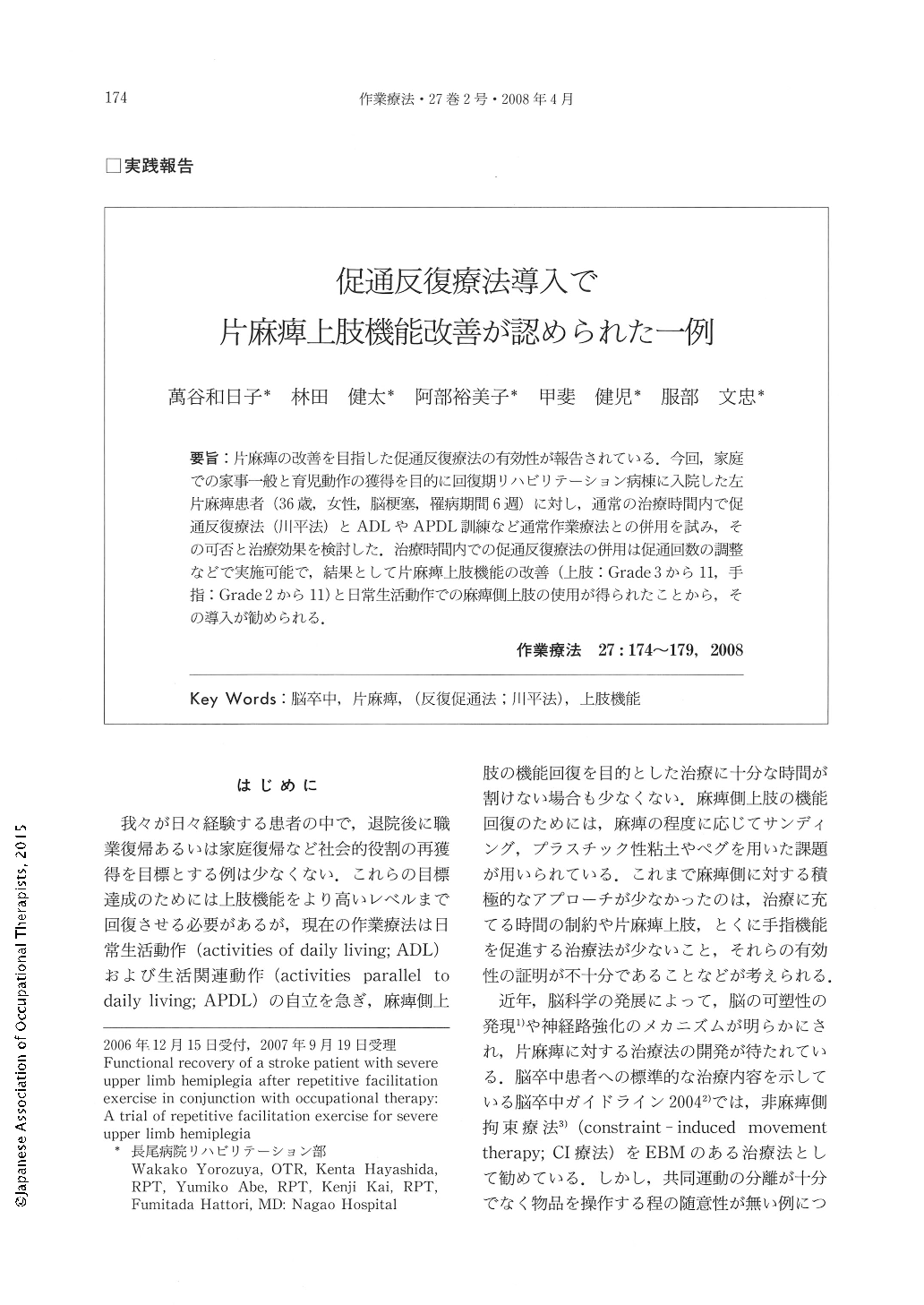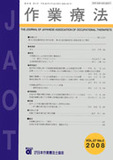Japanese
English
- 販売していません
- Abstract 文献概要
- 1ページ目 Look Inside
- 参考文献 Reference
- サイト内被引用 Cited by
要旨:片麻痺の改善を目指した促通反復療法の有効性が報告されている.今回,家庭での家事一般と育児動作の獲得を目的に回復期リハビリテーション病棟に入院した左片麻痺患者(36歳,女性,脳梗塞,罹病期間6週)に対し,通常の治療時間内で促通反復療法(川平法)とADLやAPDL訓練など通常作業療法との併用を試み,その可否と治療効果を検討した.治療時間内での促通反復療法の併用は促通回数の調整などで実施可能で,結果として片麻痺上肢機能の改善(上肢:Grade3から11,手指:Grade2から11)と日常生活動作での麻痺側上肢の使用が得られたことから,その導入が勧められる.
A new repetitive facilitation exercise (100 times each pattern), designed by Kawahira K, has been reported to improve hemiplegic upper limb and fingers. In this study, we applied a repetitive facilitation exercise (50 times each pattern) for severe upper limb hemiplegia of a patient with stroke in addition to occupational therapy within the time limitations imposed by medical insurance. The patient was a 36-year-old female with left hemiplegia (upper limb; Ueda's Grade 3, fingers; 2) at 6 weeks after onset. She hoped to recover the abilities of performing housework and raising two children. She was treated with repetitive facilitation exercise in addition to comprehensive rehabilitation treatments, including ADL and APDL training. The effects of the addition of repetitive facilitation exercise during the normal period of occupational therapy were small and could be excluded with a decrease of repetition times (50 times to 30 times). Her hemiplegia was improved (Ueda's Grade 3, to 11 in the upper limb and Ueda's Grade 2, to 11 in the fingers at discharge) at 3.5 months after admission and at 1 month after discharge. As to functional recovery of her upper limb and fingers, she was able to use her hemiparetic upper limb and fingers in ADL and APDL, such as in dressing, cooking, folding clothes and tying cords.
In conclusion, repetitive facilitation exercise (50times each) for hemiplegic upper limb and fingers during normal occupational therapy is recommended because of the ease in its execution and its effectiveness in functional recovery.

Copyright © 2008, Japanese Association of Occupational Therapists. All rights reserved.


